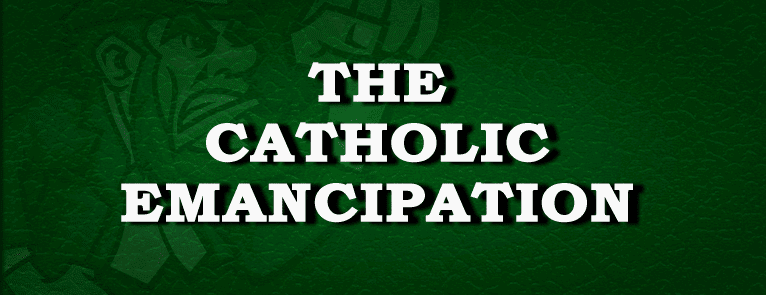
The failure of the Union of Ireland with Great Britain was that in practical terms it did little to ease the terrible poverty endemic throughout the island. Indeed as the population expanded to a never seen before level, the peasantry was lowered to such depths of misery that even foreign travelers, British and Irish officials and clerics of all faiths expressed horror. The main cause of all this poverty was the way in which the land was let and sub-let.
As the population increased so too did the competition for tenancies. This alone caused rents to soar, and only in Ulster did the tenants have some protection in that they could be recompensed for improvements they had made. In the rest of Ireland, if the tenant improved his land the landlord increased his rent.
There was no central provision for the relief of the poor and after the French wars had ended, unemployment increased as many Irish industries fell under the competition from Britain. In Parliament, Irish interests were represented by 100 MPs, all of whom were Protestant. Even though by the 1820s, Catholics were once again buying considerable amounts of land, full Emancipation, as promised by William Pitt had not come about. This caused Catholics to feel that they had no one who would represent them in parliament. On top of this, the very peace of the land was being threatened by many factions or secret agrarian groups such as the Whitefeet, Shanavests, Ribbonmen and many others, including the Defenders and the Orangemen.
By 1823 Daniel O’Connell founded the Catholic Association on the principle of achieving full emancipation by peaceful and legal means. To raise funds for this organization, he opened membership to all classes and asked for a subscription of a penny per month. This brought in very large amounts of money which funded his campaign.
O’Connell and the Catholic Association next allied themselves with the Catholic clergy in persuading the 40 shilling freeholders to go against their landlord's wishes and vote in MPS who supported emancipation.
In 1828 The Duke of Wellington, at the behest of George lV, became Prime Minister, and like his Home Secretary Sir Robert Peel, was opposed to Emancipation. They both watched in alarm as O Connell and his Association organized huge demonstrations. O’Connell himself sat for and succeeded in winning the seat for Clare. He had taken advantage of the fact whilst a Catholic could not sit as an MP, there was no law forbidding one to stand for election. This forced Peel, a bitter opponent of O’Connell, to reconsider his stand on the question of Catholic emancipation as he feared the consequences for peace in Ireland, and he was able to persuade Wellington to go along with him.
In 1829 the bill granting full Emancipation for Catholics was passed in parliament. However, the level of qualifying as a voter was raised from 40 shillings to £10, thereby disqualifying most of those who had helped O Connell.
Sources
Last updated: March 2, 2020
The Wooing of Emer is a captivating tale from Irish mythology that recounts the courtship… Read More
Cú Chulainn stands as one of the most iconic and revered figures in Irish mythology,… Read More
The Boyhood Deeds of Fionn form an integral part of Irish mythology, weaving tales of… Read More
Camogie is a traditional Irish sport that holds a significant place in the country's sporting… Read More